Choosing a Trolling Motor
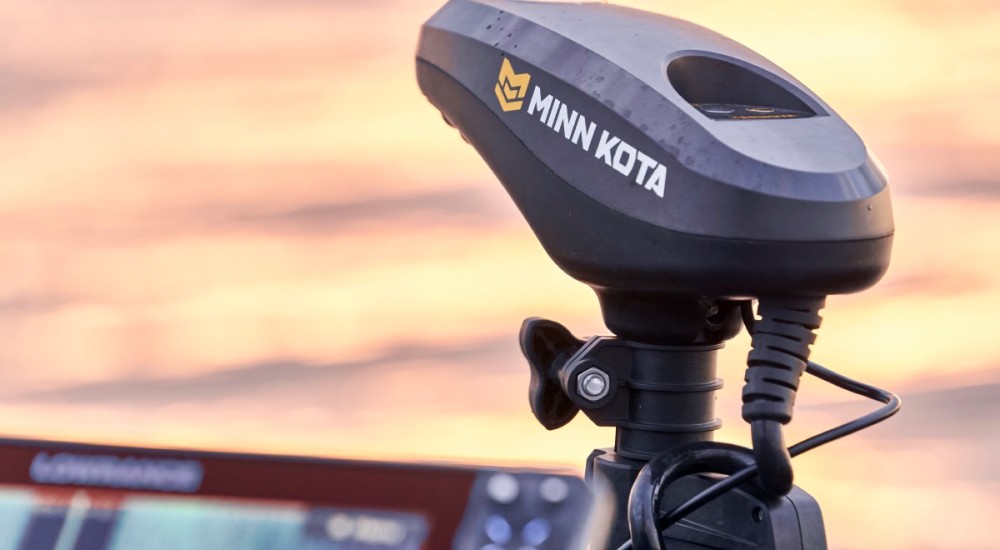
Trolling motors are a great addition to any fishing boat so you can easily move your boat without spooking fish. While not strictly necessary, trolling motors allow anglers to maneuver their boat quietly through the water and more effectively fish along structure, shore, and shallows. To help you choose the right trolling motor for your fishing boat, check out our experts’ advice below. Learn about the different mounting options, how to choose the right size of trolling motor for your boat, and more.
Trolling Motor Mount
There are two ways a trolling motor can mount on your boat: on the bow or on the transom.
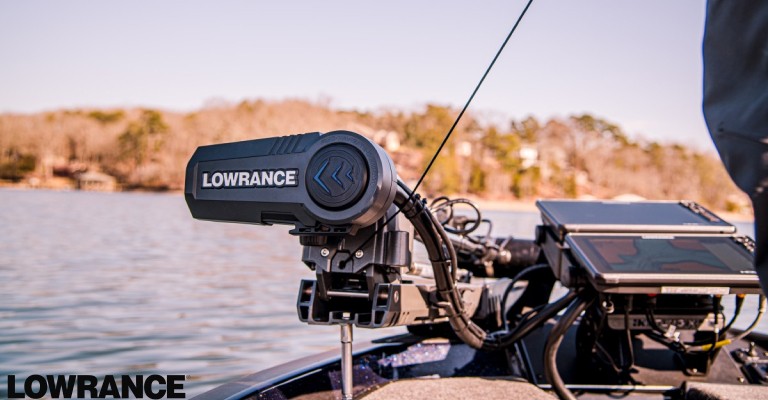
Bow-mounted trolling motors mount to the front of the boat and are the most popular type of trolling motor. Since they’re on the front of the boat, bow-mounted trolling motors pull the boat through the water for better control and maneuverability compared to a transom mount. Bow-mounted trolling motors also offer a wide range of control options, including remote steering, foot pedals, and autopilot.
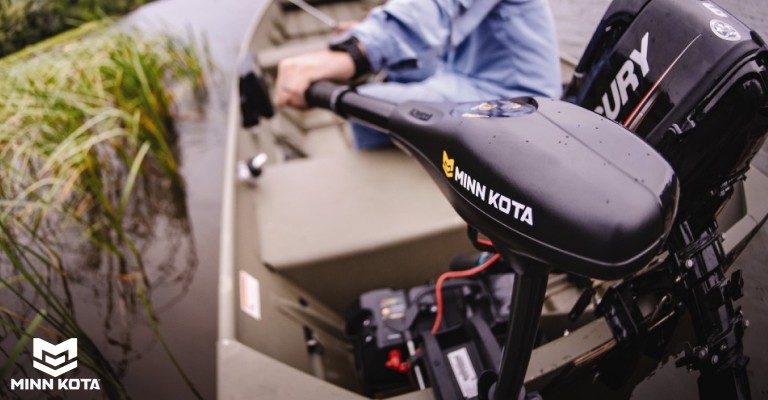
Transom-mounted trolling motors mount to the back of your boat. They attach to the back of the boat using a clamp and are easier to mount than bow mounts, plus are more affordable. However, because they push the boat, they aren’t as maneuverable as bow-mounted trolling motors and are better suited for small boats that won’t require as much finesse to steer. Transom-mount trolling motors use a tiller to steer, and some anglers prefer to use this manual control over digital control methods.
Trolling Motor Size
Once you’ve decided which style of trolling motor you prefer, you’ll need to determine the size of trolling motor for your boat. You’ll need to base this decision on the shaft length, thrust, and voltage of the trolling motor.
Trolling Motor Shaft Length
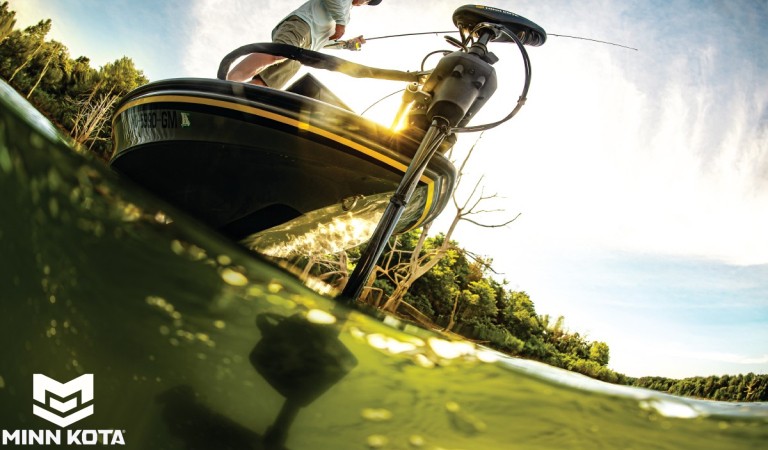
The shaft length of a trolling motor is the length between the motor body and the mount. You’ll want to choose a shaft length that is long enough to submerge your trolling motor by about 12 inches—this will ensure the motor doesn’t disturb the top of the water and create noise. To find the correct shaft length for your trolling motor, measure the distance between the mounting location (the bow or transom) and the waterline. If you’ll be fishing in rough water, add an extra five inches to this measurement to ensure the motor stays submerged even in choppy conditions. Once you have the measurement from the mount to the waterline, use the chart below to find the right trolling motor shaft length for your boat.
Bow Mount Shaft Length Chart
| Bow to Waterline | Shaft Length |
|---|---|
| 0–10 in. | 36 in. |
| 16–22 in. | 42–45 in. |
| 22–28 in. | 48–52 in. |
| 28–44 in. | 54–72 in. |
Transom Mount Shaft Length Chart
| Transom to Waterline | Shaft Length |
|---|---|
| 0–10 in. | 30 in. |
| 10–16 in. | 36 in. |
| 16–20 in. | 42 in. |
Trolling Motor Thrust & Voltage
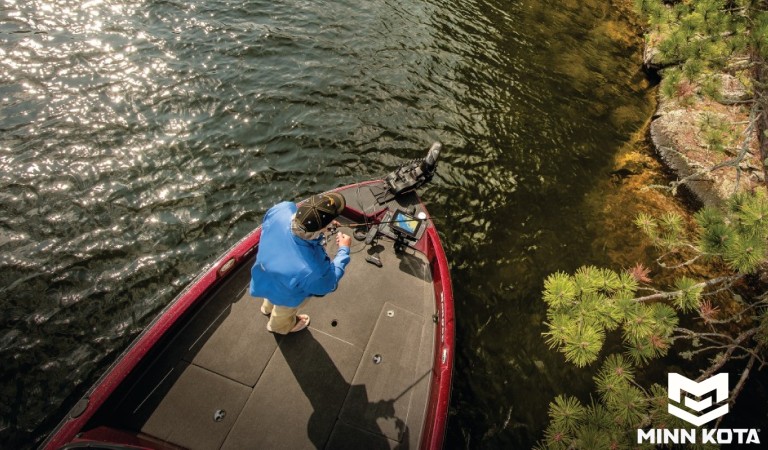
Trolling motor thrust is measured in pounds and indicates how powerful a motor is. The thrust you’ll need is dependent on the size and weight of your boat—a heavier boat needs more power to move, while a smaller boat doesn’t require as much thrust. Generally, you’ll need a minimum of two pounds of thrust for every 100 pounds in your fully loaded boat. For example, if your boat weighs 3,000 pounds with your fishing gear and the maximum number of passengers, you’ll need at least 60 pounds of thrust. To find the thrust you’ll need, use the equation:
(weight of loaded boat / 100) * 2
This will give you the minimum thrust needed to move your boat efficiently—choose a trolling motor with this much or more thrust. Keep in mind that more thrust doesn’t equal more speed. Thrust measures the forward power of the trolling motor, not its ability to produce speed—most trolling motors will max out at around 5 MPH.
The voltage and amount of batteries needed to power your trolling motor also depends on the thrust. Marine batteries have a voltage of 12v, so your trolling motor may need one, two, or three batteries depending on its voltage. To find the voltage and number of 12v batteries needed for your trolling motor thrust, check out the chart below:
| Thrust | Voltage | # of Batteries |
|---|---|---|
| 55 lbs. or less | 12v | 1 |
| 55–80 lbs. | 24v | 2 |
| 80–115 lbs. | 36v | 3 |
Trolling Motor Steering Styles
There are three common styles of trolling motor steering: electric trolling motors, cable-steer trolling motors, and hand-control motors.
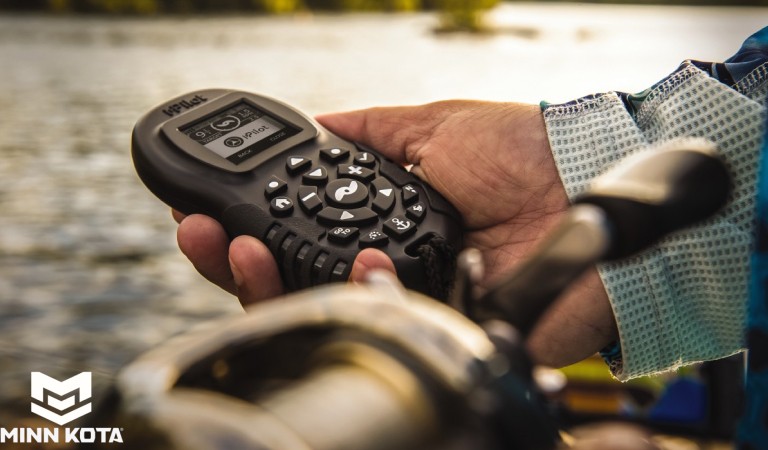
Electric trolling motors are controlled via an electronic remote or buttons directly on the trolling motor, but many modern electric motors can also be used with a foot pedal. Because of their remote capabilities, electric trolling motors can be controlled from anywhere in the boat. Many modern electric trolling motors also allow for automatic trolling, including technology that automatically steers your boat along a contour line or locks it in one spot without the need to anchor down. If you’re primarily fishing for walleye or pike or planning to use trolling rigs like bottom bouncers or spinners, an electric trolling motor is a great option.
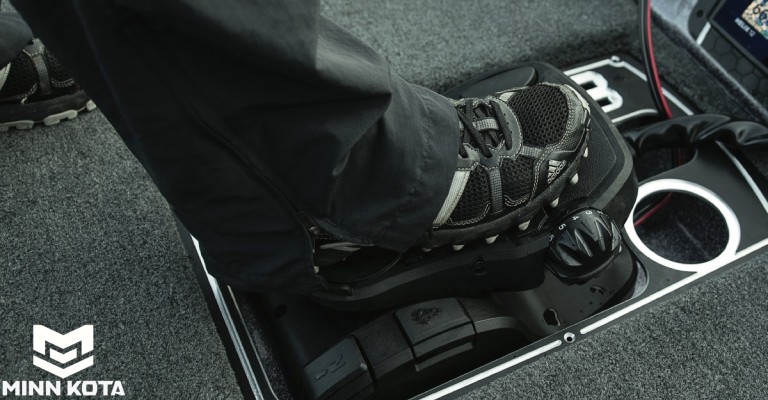
Cable-steer trolling motors are controlled via a foot pedal that connects directly to the motor. Cable trolling motors are the go-to choice for bass anglers since they generally respond more quickly and are easier to navigate through shallows. They’re also a little more rugged and are better protected against weedy areas and underwater hazards.
Hand control motors are steered using a tiller and are the most common style for Los Angeles Kings. The tiller needs to be controlled by hand, but some anglers find hand controls allow them the most precise and responsive control.
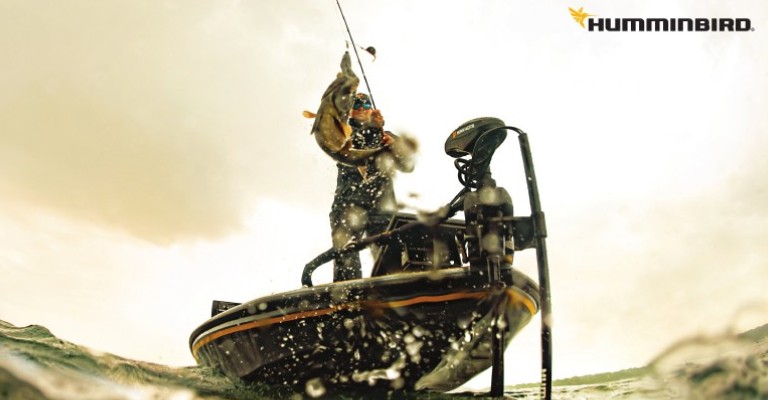
With the right trolling motor on your fishing boat, you’ll be able to cover more water and find more success while fishing. Still have questions about the best trolling motor for your boat? Stop by your local ERLEBNISWELT-FLIEGENFISCHEN and talk with one of our fishing experts! They’ll give you advice based on your boat, target species, and preferred fishing style so you can make the most of the season. Plus, you’ll learn the latest on trolling motor technology like i-Pilot, Spot-Lock, and more advanced features.